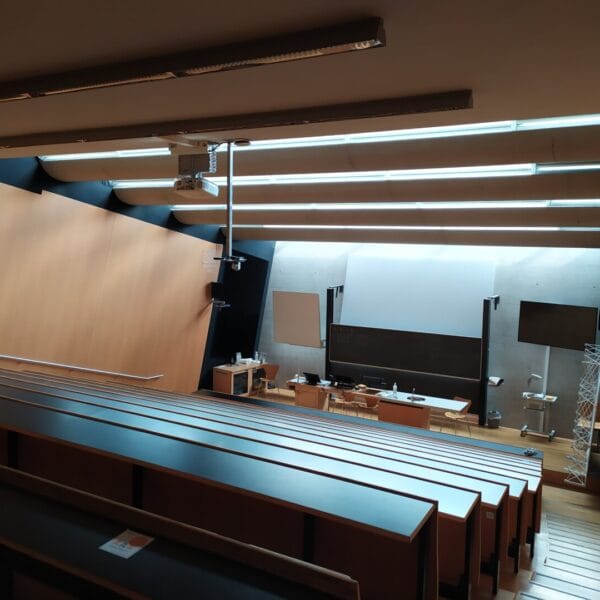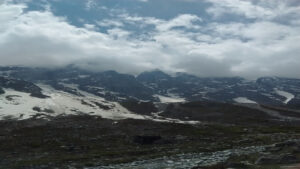ID85: Final Results from the Interreg Alpine Space Alpine Drought Observatory Project
Details
Full Title
Alpine Drought Monitoring: Final Results from the Interreg Alpine Space Alpine Drought Observatory Project
Scheduled
Wednesday, 2022-09-14
18:30-20:00Convener
Alexander Jacob
Co-Conveners
Kerstin Stahl
Assigned to Synthesis Workshop
–
Keywords
Drought, Monitoring, Impacts, Risks, Data Portal
Description
This plenary session will inform about the latest developments in regional drought monitoring in mountainous regions, by showing examples from the experiences of the implementation of the Alpine Drought Observatory. It will introduce a wide array of drought indicators that have been derived from climate and in-situ data as well as earth observation satellites. Further discussion will show the importance not only of the drought indicators but the impacts of droughts and related natural and economic risks. Of course all this wealth of accumulated information and knowledge only has value if it is shared, which leads to the presentation of the ADO online portal with its visualization tools and open data portal. The ADO data portal came online just in time to produce results on the current 2022 Drought, which will be presented by looking at the exceptional low snowfall during the winter of 21/22. Finally the regional initiative is put into context of the wider European scale introducing the network of European Drought Observatories to foster further trans regional cooperation and data exchange.
Registered Abstracts
Abstract ID 967 | Date: 2022-09-14 18:30 – 18:45 | Type: Oral Presentation | Place: SOWI – Lecture hall HS3 |
Haslinger, Klaus (1); Mayer, Konrad (1); Sušnik, Andreja (2); Gregorič, Gregor (2); Vlahović, Živa (2); Žun, Maja (2); Moderc, Andreja (2); Greifeneder, Felix (3); Zellner, Peter James (3); Bertoldi, Giacomo (3)
1: Zentralanstalt für Meteorologie und Geodynamik (ZAMG), Hohe Warte, Vienna, Austria
2: Slovenian Environment Agency, Vojkova 1b, 1000 Ljubljana, Slovenia
2Slovenian Environment Agency, Vojkova 1b, 1000 Ljubljana, Slovenia
3: Eurac Research – Institute for Earth Observation, Viale Druso 1, 39100 Bolzano, Italy
Keywords: Drought, Monitoring, Impacts, Risks, Data Portal
Monitoring different aspects of the drought cycle in the Alpine region requires a variety of indicators and indices, which depict drought conditions on the very diverse and inhomogeneous terrain. Given the importance of the Alpine region for local and downstream water related activities, ADO project aimed to provide information on different characteristics of the hydrological and meteorological variables triggering drought situation in the Alpine region and to display different stages and types of drought development. Following a review of existing indices, indicators, methodologies and other drought-related data in operational drought monitoring in the Alpine countries, a selection of indices was identified as useful for homogeneous Alpine-wide drought monitoring and thus appropriate for upgrade and extension to the entire Alpine area, considering the availability of the input data and the index applicability in the specific requirements related to the diverse Alpine terrain. The selected indices describe changes in parameters that can be related to three different types of drought: meteorological drought (precipitation anomalies and SPI), agricultural drought (SPEI, SMA, VCI and VHI) and hydrological drought (SSPI, SDI, SSI and Q95). Collection and harmonization of input data available throughout the region was performed using various data sources, including ERA5 reanalyses, remote sensing products, SNOWGRID model and in-situ measurements. The indices are derived using state-of-the-art methodologies, taking into account a sufficiently long temporal coverage, high resolution and a high refresh rate. Throughout the project, the applicability and performance of the indices was tested in case study regions with the aim to inform planning and improve risk management related to drought.
Abstract ID 968 | Date: 2022-09-14 18:45 – 19:00 | Type: Oral Presentation | Place: SOWI – Lecture hall HS3 |
Stahl, Kerstin (1); Stephan, Ruth (2); Terzi, Stefano (2); Cetara, Luca (2); Zebisch, Marc (2)
1: University of Freiburg – Institute of Earth and Environmental Sciences, Friedrichstraße 39, 79098 Freiburg, Germany
2: Eurac Research – Institute for Earth Observation, Viale Druso 1, 39100 Bolzano, Italy
Keywords: Drought Impact, Drought Risk, Vulnerability
Drought impacts in the Greater Alpine region are as diverse as the region’s landscape. A rising number of impact reports confirms an increasing exposure to drought over time. The ADO project assembled information when and how the region was impacted during past drought events. The impacts tend to peak during summer or autumn time, depending on whether they relate to meteorological and soil moisture drought or – with some delay – to hydrological drought. A tool for economic impact assessment created in the project provides a template for future quantification of economic impacts. A vulnerability assessment and mapping exercise for the most impacted sector, agriculture, promises upscaling potential from exemplary case study areas to the greater Alpine region. The experiences made with the assessments suggest that quantitative and qualitative information on the multiple risks of drought in the region will allow to anticipate future impacts and support drought management and planning
Abstract ID 969 | Date: 2022-09-14 19:00 – 19:15 | Type: Oral Presentation | Place: SOWI – Lecture hall HS3 |
Jacob, Alexander (1); Zellner, Peter James (1); Iacopino, Thomas (1); Claus, Michele (1); Alasawedah, Mohammad (1); Quintero, Daniela (1); Ventura, Bartolo (1); Vianello, Andrea (2)
1: Eurac Research – Institute for Earth Observation, Viale Druso 1, 39100 Bolzano, Italy
2: Eurac Research – Center for Sensing Solutions, Viale Druso 1, 39100 Bolzano, Italy
Keywords: Data Portal, Data Services, Open Data, Open Science
The ADO portal has been designed from the beginning, with a multitude of users with different backgrounds in mind, in order to inform easily and intuitively on the current status of drought in the alps, as well as serving as a data portal for expert users to gain access to high quality and up to date data on drought and drought impacts. This presentation will introduce the different parts of the portal to give an overview of its functionality and how to make the best use of it. The portal has been built on top of open source software building on the foundation of the environmental data portal of Eurac and further extending it with a user friendly visualization dashboard. A number of data services for accessing the open data are available following modern open interfaces like openEO and STAC.
Abstract ID 970 | Date: 2022-09-14 19:15 – 19:30 | Type: Oral Presentation | Place: SOWI – Lecture hall HS3 |
Köhler, Jonas (1); Dietz, Andreas (1); Jacob, Alexander (2); Bertoldi, Giacomo (2); Marin, Carlo (2); Haslinger, Klaus (3); Mayer, Konrad (3)
1: German Aerospace Center (DLR), German Remote Sensing Data Center (DFD)
2: Eurac Research – Institute for Earth Observation, Viale Druso 1, 39100 Bolzano, Italy
3: Zentralanstalt für Meteorologie und Geodynamik (ZAMG), Hohe Warte, Vienna, Austria
Keywords: Snow Line Elevation, Remote Sensing, Drought Forecasting, Landsat, Alps, Climate Change
In the context of the hydrological drought in Northern Italy in 2022, we analyzed current and past snow line elevation (SLE) dynamics in nine catchments in the southern Alps. The SLE time series ranging from 1985 to July 2022 were derived from a total of 4500 multi-spectral Landsat satellite acquisitions on a catchment basis. The comparison of the SLE dynamics for the hydrological year 2021/22 with the long-term observations showed that the expected median SLE was exceeded by several hundred meters from January to March 2022. We linked these observations to products of the Alpine Drought Observatory (ADO) project, namely the Standardised Snowpack Index (SSPI) and river discharge in order to assess the relation between the location of the winter SLE, water storage in the snowpack (snow water equivalent, SWE), and river discharge in spring. We expect the winter SLE position derived from timely satellite imagery to have the potential for serving as an early warning indicator for upcoming hydrological droughts in the Alpine region for the spring season in the future. The presentation will give an overview of the satellite processing workflow, the SLE derivation and their long-term median statistics as well as an illustration of the 2022 SLE situation and the connection to the ADO parameters mentioned above.
Abstract ID 971 | Date: 2022-09-14 19:30 – 19:45 | Type: Oral Presentation | Place: SOWI – Lecture hall HS3 |
Masante, Dario; Maetens, Willem; Toreti, Andrea; Barbosa, Paulo
European Commission, Joint Research Centre (JRC), Ispra, Italy
Keywords: Drought, Network, Europe
Increasing droughts and water scarcity risk characterise most of Europe and the past few years showed that drought can hit anywhere in the continent. Several initiatives and projects have been launched at European level. Each national and regional experience is a valuable collection of specific knowledge, needs and solutions. However, increasing cooperation and geographical coverage of drought monitoring in the EU is key to tackle current and future challenges related to drought. The European Drought Observatory for Resilience and Adaptation project (EDORA) was launched to support drought risk assessment at different scales, aggregating data on impacts in different sectors, and fostering connections and establishment of drought observatories in the Member States. Beyond drought impact data and multi sectoral risk assessment, just like ADO gathered multiple entities and countries “sharing” the Alps, EDORA ambition is to start doing so at European level, by offering a platform to enhance cooperation and ultimately increase European resilience.



